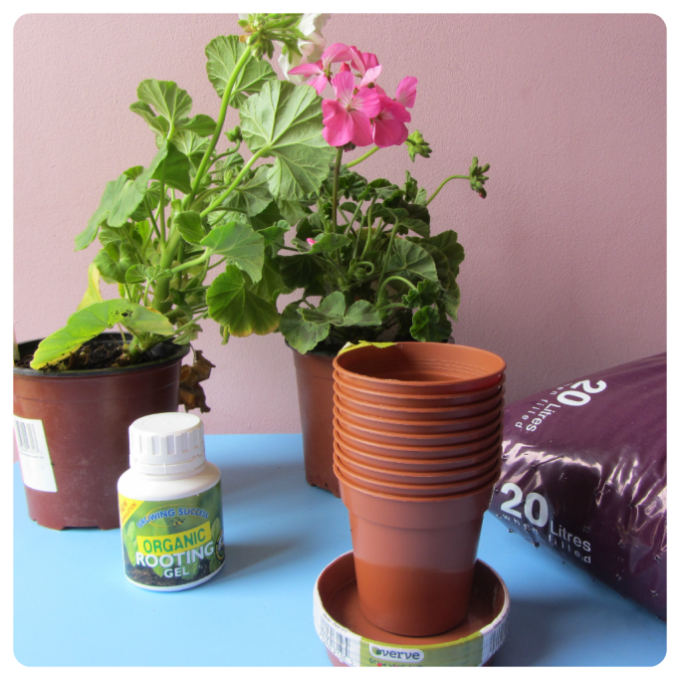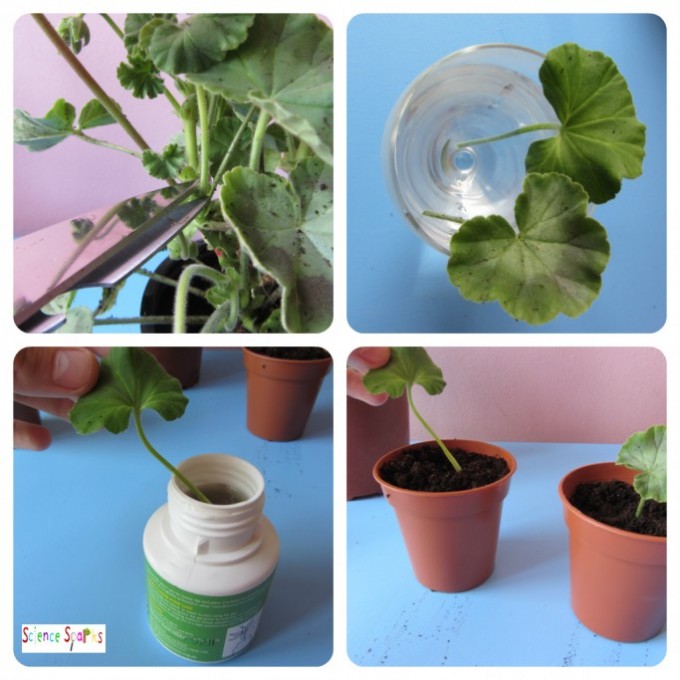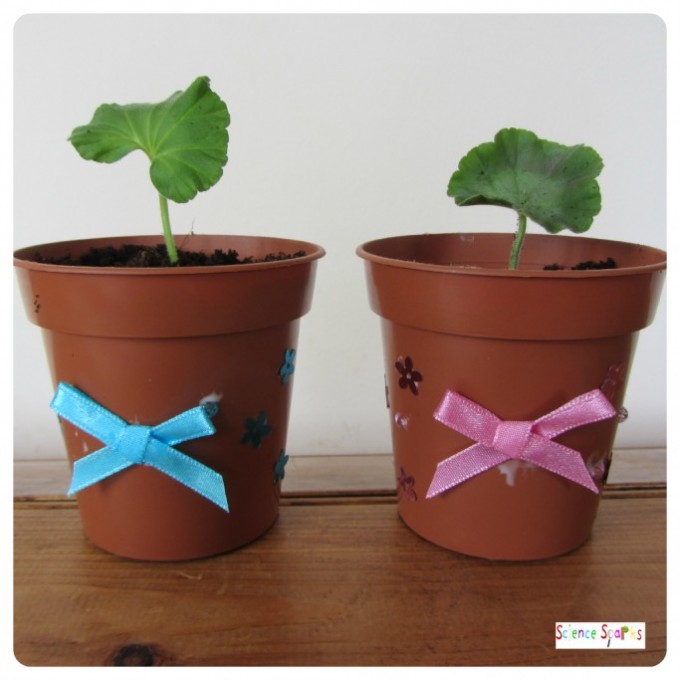If we want to grow a plant, we usually do this by planting a seed. The seed is produced by sexual reproduction (two parents), meaning that the egg from one plant and the pollen from another have met and formed a seed, resulting in the plant having qualities from both its parent plants.
However, what if you had a most beautiful plant with the prettiest colour flowers and you wanted to ensure that another plant had that colour flower – what could you do?
Clone them?
Not as silly as you might think.
Tissue cuttings are the simplest way to produce a cloned or identical plant.
How to clone a plant
What you need
- compost
- small plant pot
- small plant trays
- an original/parent plant ( we used geraniums)
- rooting powder or gel
Instructions
1. Take a healthy plant (I used geraniums) and cut a small length from the stem
2. Place this in water for a few minutes
3. Dip the end into rooting powder or gel
4. Pot the plant up with some lovely compost
5. Keep the pot away from direct sunlight and cover it in a clear plastic bag to keep it moist.
Your cutting will now grow into another plant exactly the same as your original!
You then need to nurture them, like any parent would!
Last Updated on May 4, 2023 by Emma Vanstone




What a great teaser for this post from Fun Sparks – scissors and babies – makes perfect sense. 😉
Hello, I have enjoyed following your postings and all the resources they provides. I have nominated you for an award – The Versatile Blogger! Please head on over to my blog ~ Country Fun to get your award. I look forward to sharing ideas with you in the future! Have a great summer!
Debbie
Oh, how fun!! I always love your lessons!
Oh, and Thank you for sharing on Sharing Saturday!
That requires a much greener thumb than I have 🙂
My mother-in-law does this on a routine basis and I’m always amazed when someone does this successfully.
Thanks for linking to Science Sunday!
Thanks for hosting!
I pinned this to our Sunday Showcase feature board. Thanks for sharing!
I’ve always wondered how to do this. Cool post.
New Follower from Musings of an Imperfect Mom